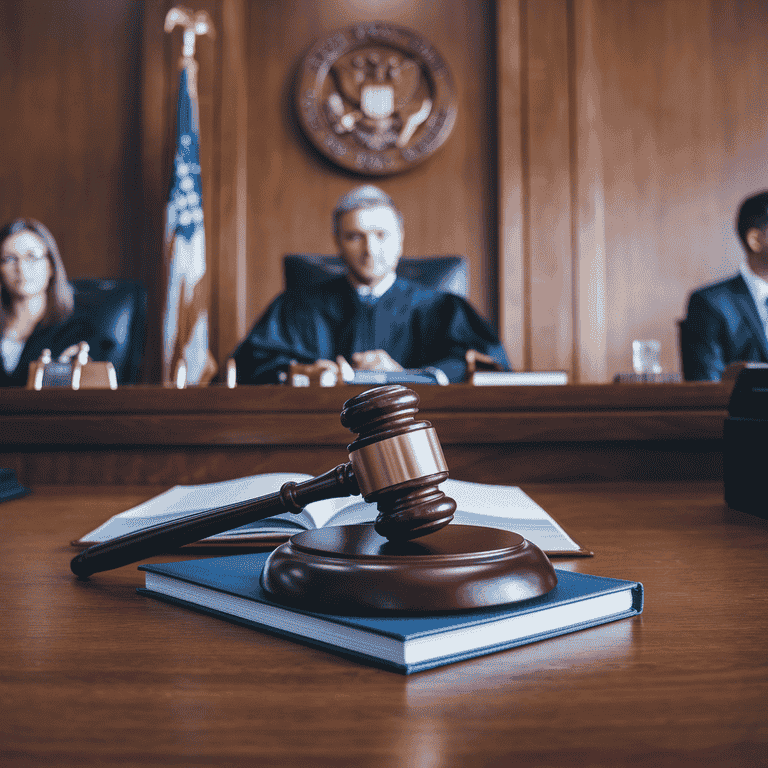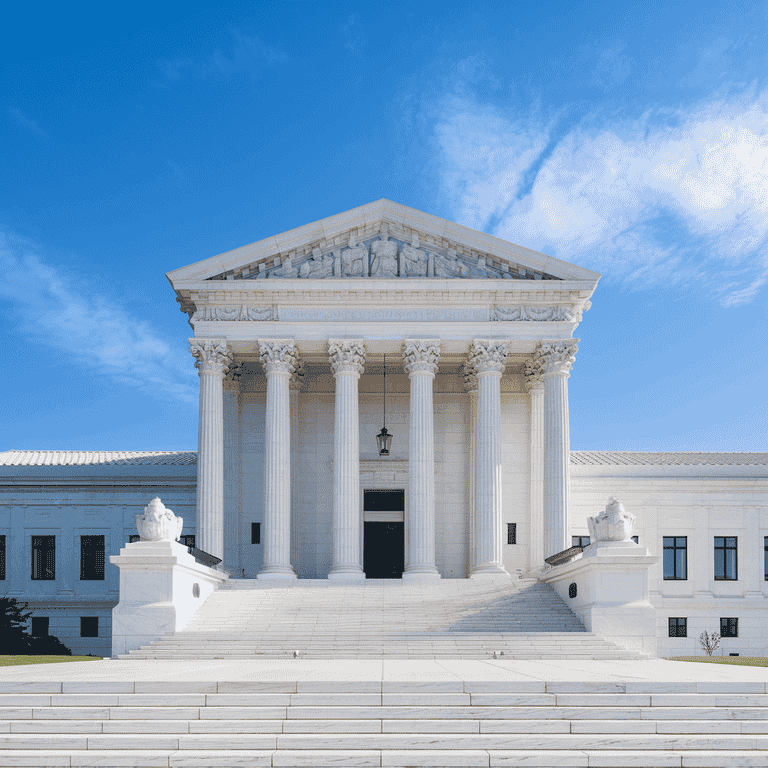Understanding the Legal Implications of Candelaria v. Kelly
Overview of Candelaria v. Kelly
Basic Case Facts
Candelaria v. Kelly is a civil case decided by the U.S. Court of Appeals for the Ninth Circuit. The case deals primarily with issues of immigration law, particularly the intersection of state and federal law in matters related to immigration enforcement.
Key facts of the case include:
- Parties involved: Juan Candelaria (Plaintiff) and Raymond Kelly, in his capacity as the Commissioner of the New York City Police Department (Defendant).
- Court: Ninth Circuit Court of Appeals.
- Filing Date: The case was initially brought to the courts in 2013.
- Case Summary: The plaintiff, Candelaria, challenged policies implemented by the New York City Police Department under Kelly’s leadership that cooperated with federal immigration authorities. Candelaria argued that these policies violated his constitutional rights.
The case raises critical questions about the balance of power between federal and local law enforcement, particularly in the context of immigration enforcement.

Summary of Legal Issues
The key legal issue in Candelaria v. Kelly involves the question of whether local law enforcement policies that cooperate with federal immigration enforcement agencies, such as ICE, violate the constitutional rights of individuals. The plaintiff, Candelaria, contended that the police department’s actions led to unlawful detention based on his immigration status.
Key statutes and legal principles involved in the case include:
- Fourth Amendment: Protection against unreasonable searches and seizures.
- Tenth Amendment: The powers not delegated to the federal government are reserved to the states or the people, raising questions of state vs. federal authority.
- Immigration and Nationality Act (INA): Federal statute governing immigration.
This case explores how local police can (or cannot) engage in enforcing federal immigration laws and the legal constraints on their actions.
Timeline of Proceedings
Key Events in the Litigation Process
The timeline of Candelaria v. Kelly includes several important legal developments:
| Date | Event |
|---|---|
| 2013 | Candelaria files suit challenging NYPD’s policies. |
| 2014 | District Court dismisses the case, ruling in favor of Kelly. |
| 2015 | Candelaria appeals to the Ninth Circuit Court of Appeals. |
| 2016 | Oral arguments heard before the Ninth Circuit. |
| 2017 | Ninth Circuit rules on the case, partially reversing the lower court’s decision. |
This timeline highlights the multi-year litigation process, which began with a challenge to the constitutionality of police practices and culminated in a significant appellate court decision.
Final Court Decision
The Ninth Circuit issued its ruling on Candelaria v. Kelly in 2017. The court found that while local police may assist federal authorities in immigration enforcement, there are limits on how far these actions can go without violating individual rights. Specifically:
- Ruling: The court ruled that Candelaria’s Fourth Amendment rights had been violated due to the unlawful detention based on an immigration hold, which lacked probable cause.
- Remedies: The case was remanded back to the lower courts for further proceedings regarding damages and appropriate remedies.
This ruling clarified the boundaries of local law enforcement’s cooperation with federal immigration authorities and established protections for individuals detained on immigration holds.
Legal Arguments in Candelaria v. Kelly
Plaintiff’s Position (Candelaria)
Core Legal Claims
Candelaria’s main legal argument was that the New York Police Department, under Kelly’s leadership, violated his constitutional rights by detaining him based on his immigration status without probable cause. The key claims brought forward by Candelaria included:
- Fourth Amendment Violation: Candelaria argued that his detention based on an ICE hold was unlawful because it was not supported by probable cause or a judicial warrant.
- Tenth Amendment Violation: Candelaria contended that the NYPD overstepped its authority by enforcing federal immigration law, thus violating the principle of federalism.
- Due Process: Candelaria also claimed that his due process rights under the Fifth and Fourteenth Amendments were violated when he was detained without proper legal procedures.
Strategy and Approach
Candelaria’s legal team focused on emphasizing the constitutional protections against unlawful detention. They relied heavily on Fourth Amendment precedent that requires police to have probable cause for detentions and seizures. The core arguments included:
- The lack of a judicial warrant or sufficient cause to justify the detention.
- The improper use of local police resources to enforce federal immigration law, which they argued should not be within the NYPD’s purview.
Candelaria’s strategy was to highlight the overreach of local law enforcement and how this overreach led to violations of constitutional rights. They cited past rulings, such as Arizona v. United States, which restricted the ability of state and local authorities to enforce federal immigration laws without federal oversight.
Defendant’s Position (Kelly)
Defense Strategy
Kelly and his defense team argued that the NYPD’s actions were within the scope of local law enforcement’s authority to cooperate with federal agencies. They claimed that the detention was lawful under federal immigration laws and that the department’s cooperation with ICE was consistent with its duty to maintain public safety.
The key defenses included:
- Legitimate Cooperation with Federal Authorities: The defense argued that local police have the right to assist federal agencies in enforcing immigration laws under certain circumstances, particularly when public safety is at risk.
- Qualified Immunity: Kelly’s legal team invoked the doctrine of qualified immunity, asserting that even if mistakes were made, Kelly and his officers acted in good faith within the boundaries of their official duties.
- No Constitutional Violation: The defense contended that Candelaria’s detention was reasonable and did not constitute an unreasonable seizure under the Fourth Amendment.
Counterarguments
Kelly’s defense sought to discredit Candelaria’s claims by emphasizing the need for cooperation between local and federal law enforcement agencies in matters of public safety. They also pointed out that the ICE hold was a standard procedure and that any detention stemming from it should be considered lawful.
The defense’s strategy focused on asserting that the NYPD’s policies were necessary for public safety and complied with federal law. Despite these arguments, the court found that the department’s actions did not meet the required standards for probable cause under the Fourth Amendment.

Court’s Analysis in Candelaria v. Kelly
Evaluation of Legal Claims
Plaintiff’s Arguments
In reviewing Candelaria’s claims, the court focused heavily on the Fourth Amendment. This amendment protects individuals from unreasonable searches and seizures by law enforcement. Candelaria argued that the NYPD’s decision to detain him based on an immigration hold violated this protection because there was no probable cause or warrant for his detention.
The court analyzed the facts and determined that Candelaria’s detention was based solely on an immigration hold issued by ICE. The hold did not include a judicial warrant, nor did it provide specific evidence that Candelaria was involved in any criminal activity. Without these elements, the court agreed with Candelaria’s assertion that the detention was unjustified.
The court also examined Candelaria’s Tenth Amendment claim. Candelaria contended that the NYPD, by enforcing federal immigration laws, exceeded its authority as a local law enforcement agency. However, the court gave this argument less weight, noting that local agencies can assist federal authorities under certain conditions, but those conditions must still respect constitutional rights.
Defendant’s Counterarguments
Kelly’s defense team insisted that the NYPD had the right to work with federal immigration agencies. They argued that this cooperation was necessary to ensure public safety. Nevertheless, the court wasn’t convinced by this argument when it came to the specific facts of the case.
The court emphasized that probable cause is a fundamental requirement for detaining an individual. Simply following an ICE request, without more concrete evidence or a warrant, wasn’t enough. The court ruled that Candelaria’s detention based on the ICE hold alone was unconstitutional under the Fourth Amendment.
Interpretation of Relevant Laws
Application of Statutes or Precedents
The court referred to several key legal precedents in making its decision. Some of the most important cases and laws considered include:
- Arizona v. United States: This case limited how far states and local law enforcement could go in enforcing federal immigration laws. The court referenced this ruling to illustrate the boundaries of local agencies like the NYPD.
- Immigration and Nationality Act (INA): The INA governs federal immigration enforcement, and the court examined how this law interacts with local enforcement practices.
In applying these statutes and cases, the court focused on the balance between local autonomy and constitutional protections. They made it clear that local police are bound by constitutional limits, even when cooperating with federal authorities.
Implications for Future Cases
This case sets an important precedent for future cases involving local law enforcement’s role in immigration enforcement. Courts will likely look to this ruling when deciding whether similar cooperation between local police and ICE violates constitutional rights.
It also sends a message to police departments: cooperation with federal immigration agencies doesn’t override basic constitutional protections. This case strengthens the legal foundation for individuals challenging unlawful detentions based on immigration holds.
Outcome and Legal Impact of Candelaria v. Kelly
Immediate Outcome
Ruling and Consequences
The Ninth Circuit ruled in favor of Candelaria, finding that his Fourth Amendment rights had been violated. Specifically, the court concluded that his detention based on the immigration hold was unlawful because it lacked probable cause.
The court’s ruling included the following consequences:
- The decision: The case was sent back to the lower court for further proceedings regarding possible damages Candelaria could be awarded.
- Clarification on detention: Local law enforcement cannot detain individuals based solely on immigration holds from ICE, unless there is probable cause or a judicial warrant.
This ruling was a significant step in defining how local and federal authorities can work together in immigration enforcement.
Compliance and Enforcement
After the ruling, the lower court had to determine what compensation, if any, Candelaria would receive. This included whether Candelaria would be awarded monetary damages for the unlawful detention.
Moreover, the decision placed pressure on local law enforcement agencies to review their cooperation policies with ICE. Agencies that rely on immigration holds as grounds for detention had to think about how this ruling might impact their practices.
Broader Legal Implications
Impact on Similar Cases
The Candelaria v. Kelly decision has been cited in several subsequent cases, particularly those involving the intersection of immigration enforcement and constitutional rights.
Some of the areas where this ruling has had an impact include:
- Detention practices: Law enforcement agencies must be cautious when detaining individuals based solely on immigration status.
- Cooperation with ICE: Local police departments now face greater scrutiny when they engage in cooperative efforts with federal immigration agencies.
In essence, this case serves as a reminder that constitutional protections—like those provided under the Fourth Amendment—cannot be overridden by requests from federal agencies.
Public and Legal Community Reactions
The decision in Candelaria v. Kelly sparked a range of reactions from both the public and the legal community.
- Legal scholars: Many praised the ruling for reinforcing constitutional safeguards. They pointed out that this case reaffirmed the need for probable cause in all detentions, regardless of whether federal or local authorities were involved.
- Public opinion: The case also drew attention to the broader debate about immigration enforcement. Some saw the ruling as a victory for immigrant rights, while others viewed it as a challenge to local cooperation with federal agencies in keeping communities safe.
The decision continues to influence the discussion on how far local law enforcement can go when enforcing federal laws. It’s a ruling that many people will reference in future debates about immigration policy and police powers.

Appeals and Post-Judgment Proceedings
Overview of Appeals Process
Post-Judgment Motions
After the Candelaria v. Kelly ruling, both sides had options for post-judgment motions. The plaintiff, Candelaria, could seek to enforce the court’s decision, while Kelly and the NYPD could file motions challenging specific aspects of the ruling.
Common post-judgment motions include:
- Motion for reconsideration: This allows the losing party to argue that the court overlooked key facts or legal arguments.
- Motion for clarification: This seeks clarification on parts of the ruling that may be ambiguous.
- Motion to stay enforcement: This requests that the court pause the enforcement of the ruling while an appeal is pending.
These motions can significantly impact the timeline and implementation of the court’s decision.
Appeal to Higher Courts
If either party disagrees with the judgment, they can appeal to a higher court. Appeals are typically based on claims of legal errors in the lower court’s decision.
For example, Kelly might argue that the district court misapplied the law regarding immigration holds. Conversely, Candelaria could assert that the court failed to recognize the full extent of his constitutional rights.
The appeals process generally involves:
- Filing a notice of appeal: This initiates the appeal and must be done within a specific time frame.
- Submitting briefs: Both parties present written arguments outlining their positions.
- Oral arguments: In some cases, the court may schedule a hearing for attorneys to present their cases verbally.
Impact of Appeals on the Original Ruling
The appeals process can lead to various outcomes. The appellate court might uphold the original ruling, reverse it, or send the case back to the lower court for further proceedings.
The potential impacts include:
- Reinforcement of rights: If the ruling is upheld, it solidifies the precedent set by Candelaria v. Kelly.
- Clarification of law: A reversal could create confusion or new legal standards regarding immigration holds.
- Further litigation: Depending on the outcome, additional legal battles may arise as parties seek to address unresolved issues.
These factors illustrate how the appeals process plays a critical role in shaping the legal landscape surrounding immigration enforcement.
Public Response and Legal Community Reactions
Community Engagement
The Candelaria v. Kelly ruling sparked discussions across communities, especially among immigrant rights advocates. Many organizations seized the opportunity to inform residents about their rights and the implications of the ruling.
Community responses included:
- Public forums: Local groups organized events to educate residents on their legal rights in interactions with law enforcement.
- Advocacy campaigns: Various organizations launched campaigns to promote awareness and support for affected individuals.
- Legal assistance programs: Many offered free or low-cost legal consultations for those facing potential immigration issues.
These efforts aimed to empower individuals and make sure they understood their rights under the new legal framework.
Responses from Legal Professionals
Legal professionals reacted with keen interest in the implications of the ruling. Many viewed it as a pivotal moment in immigration law, emphasizing the importance of constitutional protections.
Responses included:
- Legal commentary: Scholars and attorneys published articles analyzing the ruling’s impact on immigration enforcement.
- Training sessions: Law firms began hosting training for attorneys on the intricacies of immigration law and constitutional rights.
- Networking events: Legal professionals connected with community organizations to collaborate on protecting immigrant rights.
This engagement illustrates the ongoing dialogue within the legal community about the balance between public safety and individual freedoms.

Breaking It Down For You
Key Takeaways
The Candelaria v. Kelly case represents a significant moment in the ongoing conversation about immigration enforcement and constitutional rights. The court’s ruling underscores the necessity of probable cause when it comes to detaining individuals based solely on immigration holds.
Key points include:
- Importance of probable cause: Law enforcement must have valid evidence before acting on immigration holds.
- Limits on local law enforcement: Local agencies cannot violate individuals’ rights in cooperation with federal authorities.
- Community awareness: The ruling has prompted greater awareness and understanding of legal rights among immigrant communities.
Looking Ahead
As the implications of the ruling continue to unfold, stakeholders must stay engaged. Law enforcement, legal professionals, and community organizations all play vital roles in ensuring that constitutional rights are upheld.
The Candelaria v. Kelly case could influence future legal challenges and policies regarding immigration enforcement. By focusing on education and advocacy, communities can work together to navigate this complex environment while protecting individual freedoms.
In summary, this case not only reinforces the importance of constitutional protections but also highlights the need for ongoing dialogue and collaboration between law enforcement and the communities they serve.

Frequently Asked Questions
What is the significance of the Candelaria v. Kelly case?
The Candelaria v. Kelly case is significant because it addresses the balance between immigration enforcement and constitutional rights. The court ruled that local law enforcement must have probable cause before detaining individuals based solely on immigration holds, thereby reinforcing individual freedoms.
How can individuals stay informed about their rights after this ruling?
Individuals can stay informed by attending community forums, engaging with local advocacy organizations, and accessing legal resources online. Many organizations provide updates and educational materials regarding rights related to immigration enforcement.
What should someone do if they believe their rights have been violated during an immigration detention?
If someone believes their rights have been violated, they should document the incident as thoroughly as possible, including dates, times, and any witnesses. They can then contact legal aid organizations or civil rights groups for guidance and support in pursuing a complaint or legal action.
Are there any resources available for immigrants who need legal assistance?
Yes, there are various resources available, including local legal aid organizations, immigrant advocacy groups, and nonprofit organizations that specialize in immigration law. Many offer free or low-cost consultations and can help individuals navigate their legal options.
What impact does the ruling have on law enforcement practices in New York?
The ruling has prompted law enforcement agencies in New York to reassess their policies regarding immigration holds. They must ensure compliance with the requirement for probable cause, which may lead to changes in how they cooperate with federal immigration authorities.
How does the appeals process affect the implementation of the court’s decision?
The appeals process can affect the implementation of the court’s decision by potentially delaying enforcement or leading to modifications in how the ruling is applied. If the case is appealed, the appellate court’s decision may clarify or alter the original ruling’s impact.
What are the potential consequences for law enforcement agencies that do not comply with the ruling?
Law enforcement agencies that do not comply with the ruling may face legal challenges, lawsuits, or public backlash. Noncompliance can also result in potential liability for violating individuals’ constitutional rights, leading to costly settlements or judgments.
How can community members support immigrant rights following this case?
Community members can support immigrant rights by volunteering with local advocacy organizations, attending informational events, and raising awareness about the implications of the ruling. Engaging in discussions and encouraging others to understand their rights can foster a more supportive environment for all.
What changes might we see in immigration policy as a result of this ruling?
The ruling could lead to changes in immigration policy at both the local and state levels. Policymakers may re-evaluate how immigration enforcement is conducted, ensuring that practices align with constitutional rights and focusing on community safety and trust-building.
How does this ruling relate to broader national conversations about immigration reform?
This ruling is part of a broader national conversation about immigration reform, highlighting issues of due process and the rights of individuals in the immigration system. It underscores the ongoing debates about how to balance enforcement with the protection of civil liberties.

More Resources for You
Molly Rosenblum, Esq., our distinguished lead attorney, not only offers experienced legal services but has also developed a wide range of resources to assist you in various aspects of family law. These resources, thoughtfully prepared and available on the Rosenblum Law website, are designed to provide you with valuable information and guidance tailored to your specific needs in family-related legal matters. Here are some key resources that you might find particularly helpful:
Las Vegas Family Law Attorneys: A comprehensive guide to understanding family law in Las Vegas, offering insights and experienced legal knowledge to navigate through complex family law issues. Explore the guide.
Family Court Las Vegas: An informative resource detailing the processes and procedures in the Family Court of Las Vegas, helping you understand what to expect. Learn about Family Court.
Common Law Marriage in Nevada: Clarifies the legal standing and implications of common-law marriage in Nevada, a topic often surrounded by misconceptions and confusion. Understand common law marriage.
Name Change Las Vegas: Offers a step-by-step guide on how to legally change your name in Las Vegas, outlining the necessary procedures and legal requirements. Learn how to change your name.
Nevada Power of Attorney: Provides detailed information on creating a power of attorney in Nevada, enabling you to make informed decisions about granting someone the authority to act on your behalf. Read about Nevada Power of Attorney.
How to File a Motion in Family Court: A helpful guide for those needing to understand the process of filing motions in family court, ensuring you are well-prepared for your legal proceedings. Learn to file a motion.
Family Court Mediation: Offers insights into the mediation process in family court, providing a peaceful and cooperative approach to resolving disputes. Understand mediation processes.
Unbundled Attorney: Explains the concept of unbundled legal services, allowing you to select specific legal services rather than full representation, tailored to your needs and budget. Explore unbundled legal services.
Nevada Adoption: A resourceful guide offering essential information and procedural knowledge for those considering or going through the adoption process in Nevada. Read about Nevada adoption.
Molly Rosenblum, Esq. aims to empower you with these resources, ensuring you have access to the necessary information and guidance to navigate the complexities of family law. We encourage you to utilize these valuable resources to make informed decisions in your family law matters.

Offsite Resources You May Find Helpful
Here are some suggested offsite resources related to the article that readers may find useful:
Lambda Legal: Legal organization advocating for LGBTQ civil rights, with resources on marriage equality.
National Center for Lesbian Rights: Legal advocacy organization for LGBTQ community, with info on relationship recognition.
GLBTQ Legal Advocates & Defenders (GLAD): Legal rights organization in New England focused on LGBTQ issues.
The Williams Institute: UCLA think tank conducting research on sexual orientation and gender identity law and public policy.
Pew Research Center: Nonpartisan research organization with data and reports on same-sex marriage trends.
American Civil Liberties Union (ACLU): Nonprofit advocacy group that was involved in key same-sex marriage cases.
Supreme Court of the United States: Official website with access to court opinions, including Obergefell v. Hodges.
Obergefell v. Hodges, 576 U.S. 644 (2015): Landmark US Supreme Court case establishing the right to marry for same-sex couples.

A Special Message from Our Lead Attorney

Molly Rosenblum, Esq
Dear reader,
Thank you for reviewing the information I’ve provided about Nevada family law and the Candelaria v. Kelly case.
I hope these resources have helped increase your understanding of our state’s complex legal issues surrounding same-sex marriage and divorce.
My team and I know this can be a complex and emotional process. We are always happy to have an initial discussion to learn more about your situation and provide guidance on the next steps.
Please call our office at (702) 433-2889 to schedule a consultation. There is a fee for an initial meeting, which allows us to review your case details and documents.
This helps us provide you with the most accurate advice moving forward.
We look forward to hearing from you soon and assisting you through this challenging time.
Sincerely,
Molly Rosenblum, Esq.
The Rosenblum Allen Law Firm



